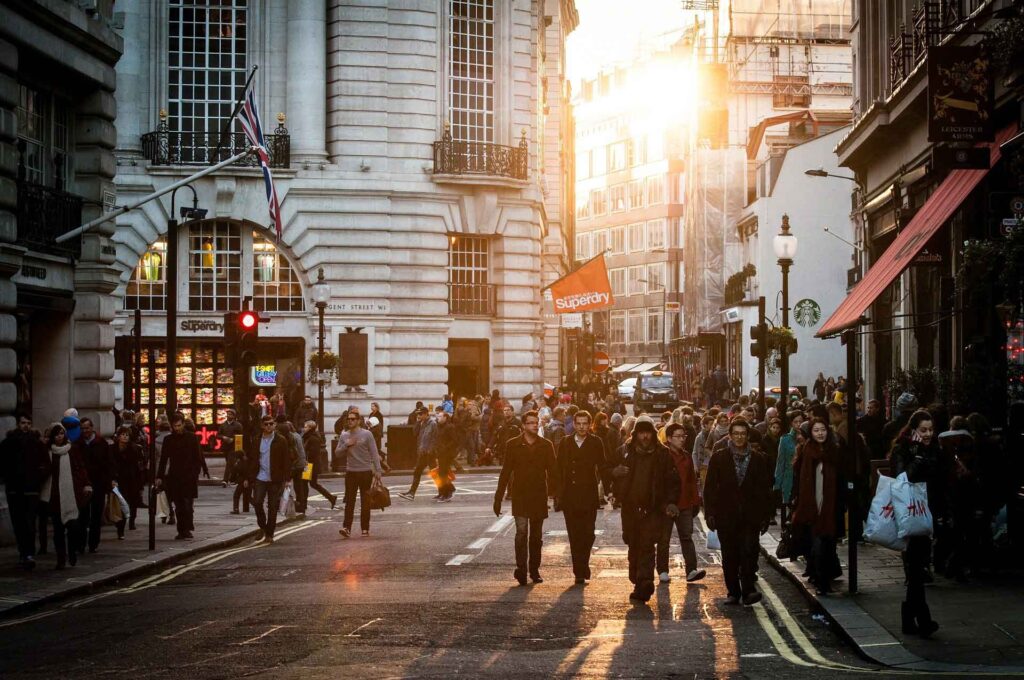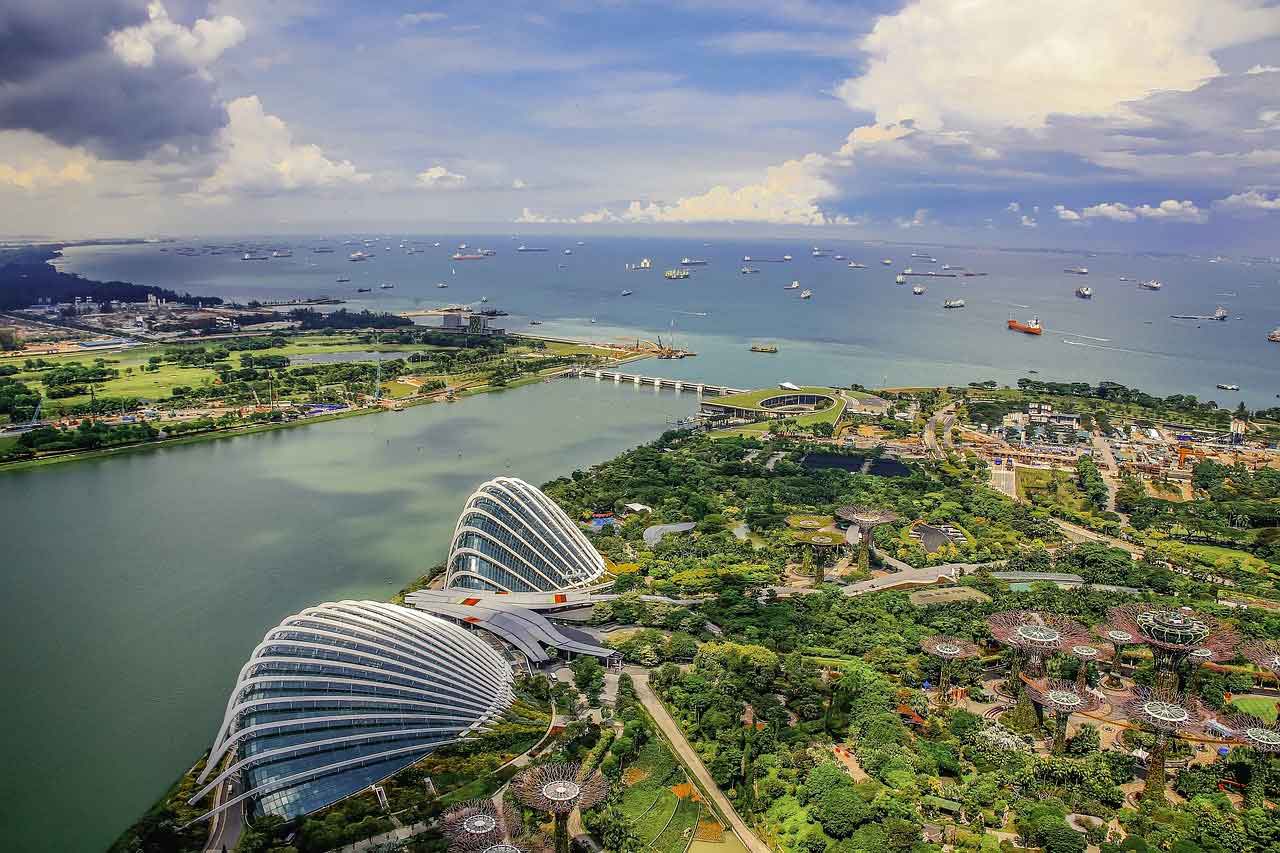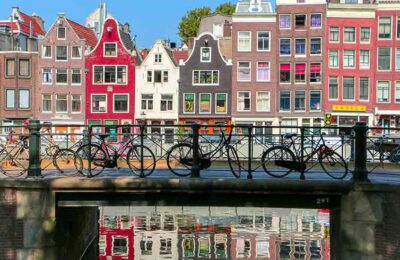We live in a rapidly urbanizing world where cities drive economic development. This allows more people to move into urban areas in search of jobs. But what is more important is to create a city where people can enjoy a good quality of life.
Affordability, health, safety, and sustainability are important elements in providing a better quality of life in urban areas.

Creating people-oriented spaces that support walking and cycling improves the quality of life in cities.
Why Quality of Life Matters in Cities?
Most cities are often hotspots for poor air quality, lack of green spaces and poor physical and mental health. Noise, traffic congestion makes many cities less liveable place. Additionally, dissatisfaction of trust in public administration and people living in the city also influences the low quality of life.
On the other hand, the better quality of life and satisfaction comes from feeling safe, having financial stability and the area where they live.
Improving the quality of life will support more people to stay or others to move into the city.
Cities and Liveability
COVID-19 pandemic showed cities were hotspots for affecting a large population. And on the other hand, a high concentration of people is vulnerable to natural and man-made disasters.
This shows how climate change mitigation and public health improvements are becoming important factors in planning cities.
Planning an integrated city means providing a healthier lifestyle with a climate-resilient infrastructure. This comes from providing a people-oriented infrastructure, accessibility to basic facilities and enhancing green spaces.
Why Car-Free Spaces are Important in Cities
Many global cities are planning car-free areas to reduce carbon emissions from private car use. Paris, Amsterdam, and Barcelona are few cities that turned several spaces into car-free zones. They were transformed with the motive to reduce pollution and tackle climate change effects.
Moreover, cars don’t promote a healthy lifestyle in cities. Not only does it reduce an individual’s physical activity, but cars have other environmental effects including noise pollution.
As many trips can be made without cars, few cities are now prioritizing walking, cycling and public transport. This is mainly to reduce greenhouse gas emissions from the transport sector. With better air quality, less traffic congestion and reduced noise pollution, the quality of life improve in cities.
Moreover, cars take up a lot of public space including large parking spaces. In many cities, cars leave only limited space for people to walk or cycle on streets. This hurts the city’s liveability with unsafe public space for people. By prioritizing non-motorised transport, people will have more space to enjoy cultural and social facilities.
1. Compact and Mixed-Use City Increases the Quality of Life
Urban Sprawl often creates inefficiency in accessing areas without a car. They increase private vehicle usage in cities. For example, areas in America were built with the idea of using more cars. What might be a 15-min drive in a car is a 21/2 hour walk or bus ride. This increase car culture in sprawled out neighbourhoods.
Another example is Mumbai, the downtown area is situated 10 miles from the residential area. Due to poor linkage of public transport, the travel takes an average of 47 minutes each way by car. This type of urban development has increased private car ownership by 3700% in over 60 years, contributing to traffic congestion and an increase in air pollution.
In terms of the compact and mixed-use city, New York has a mix of facilities that allows people to walk, cycle or use public transport. This creates a more people-oriented urban environment.
A liveable city is where people can access their daily needs within walking or cycling distance or by public transport. Schools, healthcare facilities, convenience stores, restaurants and green spaces are located within the neighbourhood. In mixed-use areas, the connectivity between different facilities reduces the need for private vehicles. This, in turn, helps people to avoid unnecessary travel by cars within the city.
Recently, we saw how the COVID-19 pandemic restricted people to get their needs locally. This increased the need for local amenities.
A compact and mixed-use city is affordable for residents. It cuts travel costs and car expenses as people can access their basic needs locally. One-minute city in Sweden and a 15-minute neighbourhood in Paris are great examples of creating a compact and mixed-use city.
2. Walking, Cycling and Public Transport as Main Mobility
A great city has an inclusive design for all transit modes, especially prioritizing pedestrians and cyclists.
Lack of safe cycling and pedestrian infrastructure is recognized in several cities including the developed ones. The car-dominated city of Los Angeles has limited public transport facilities and lacks cycling infrastructure. On the other hand, emerging cities in South Asia cities are examples of a lack of people-oriented urban planning. These cities also have large populations exposed to worse air quality.
Most cities tend to build more roads and highways. But to bring the city back to people, roads must be redesigned to provide adequate and safe facilities for pedestrians and cyclists. This will not only improve the quality of life of residents but improve the environmental quality of a city.
Copenhagen uses cycling as one of the primary modes of transport. Due to its climate-friendly practices, the city is now on its way to become the first carbon-neutral city in the world by 2025.
COVID-19 pandemic showed a dramatic decrease in carbon emissions from the transport sector during the earlier lockdowns. Research also showed the link between air pollution and an increase in COVID-19 related causalities.
This gave several city leaders to create a solution that reduces pollution and promote a healthier lifestyle. Many cities like Paris started implementing infrastructure for walkers and cyclists.
3. Green Spaces for all
COVID-19 pandemic also showed the importance of green spaces in supporting public health. Many researchers found that neighbourhoods especially the low-income ones lack green spaces.
This inequality in green space distribution was easily recognized during the lockdowns when local green spaces were not available.
The lack of green space also increases the temperature of the area. Mainly from heat absorbed through exposed surface materials. Normally, shading from trees help in mitigating the hot temperature felt in cities.
There are many reasons why green spaces are important in cities. Being in nature improves the physical and mental well-being of residents. Moreover, heatwaves and floods can be mitigated with the presence of parks and gardens in cities.
Every urban resident needs to have green spaces to improve their quality of life irrespective of their racial identity or income group. It must be a necessity to provide access to green spaces like providing access to roads or public space in cities.
People-oriented urban planning increases the quality of life of residents.
- Accessibility and affordability: Quality of life in urban areas is determined based on easy access to basic facilities, the presence of affordable transport options, and access to green spaces.
- Prioritizing public health: Besides the economic development of a city, policymakers must concentrate more on improving the physical and social well-being of people. This includes green parks and the availability of cultural, social and recreational facilities for all. Moreover, a public space that prioritizes walking or cycling also support public health.
- Climate-resilient urban planning: Moreover, as climate change effects are taking place, environmental issues must be tackled to increase the liveability in urban regions. As a larger population is exposed to floods, heatwaves, and other harsh climatic events, climate-resilient planning is also necessary to improve the quality of life in cities.
- Less private vehicle use: Environmental factors like good air quality and less noise improve liveability. This can be achieved through less car use and increased sustainable transport use.

